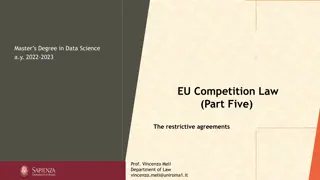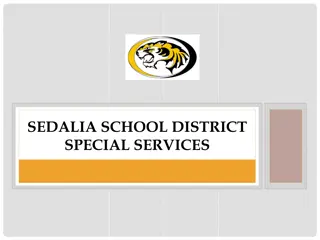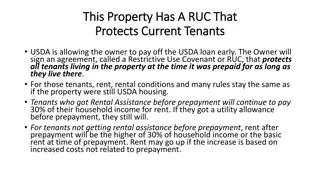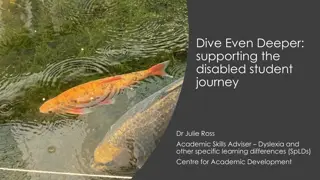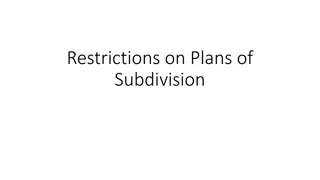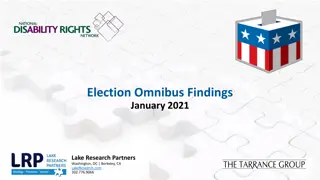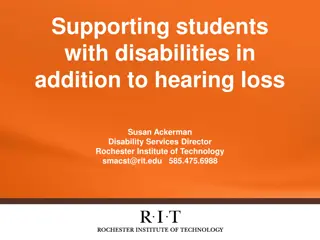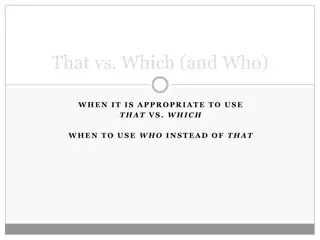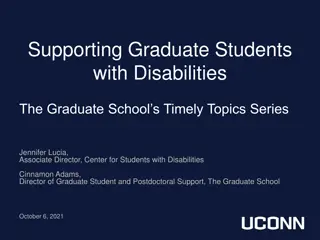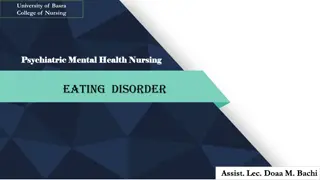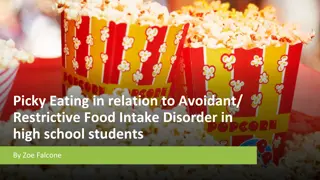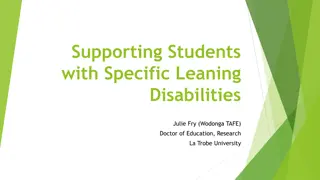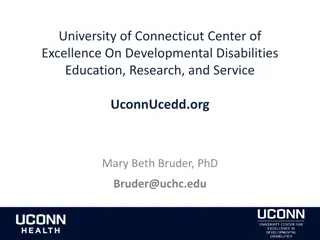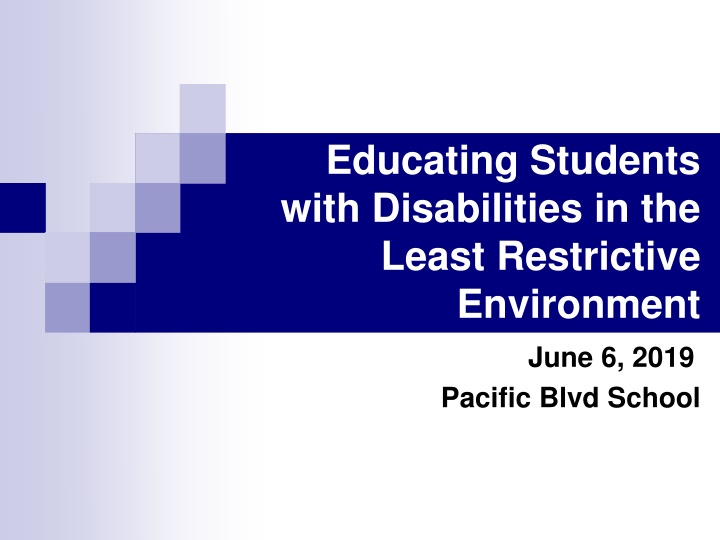
Least Restrictive Environment in Special Education
Learn about educating students with disabilities in the least restrictive environment, legal mandates, IDEA requirements, and the preference for educating students with age-appropriate peers. Discover the concept of the Least Restrictive Environment (LRE) and its importance in providing suitable education for students with disabilities.
Download Presentation

Please find below an Image/Link to download the presentation.
The content on the website is provided AS IS for your information and personal use only. It may not be sold, licensed, or shared on other websites without obtaining consent from the author. If you encounter any issues during the download, it is possible that the publisher has removed the file from their server.
You are allowed to download the files provided on this website for personal or commercial use, subject to the condition that they are used lawfully. All files are the property of their respective owners.
The content on the website is provided AS IS for your information and personal use only. It may not be sold, licensed, or shared on other websites without obtaining consent from the author.
E N D
Presentation Transcript
Educating Students with Disabilities in the Least Restrictive Environment June 6, 2019 Pacific Blvd School
Outcomes Increase Knowledge of Special Education Legal Requirements and the principle of Least Restrictive Environment Review Parent s Procedural Rights and Safeguards regarding Special Education
Legal Mandates Federal Law Individuals with Disabilities Education Act (IDEA) 2004 Code of Federal Regulations (CFR) State Law California Education Code (EC)
IDEA Requirements The IDEA mandates that the placement for each student with a disability be only as restrictive as the student s individual needs require. The basic regulatory requirement is that students should only be segregated from the regular education classroom if they cannot be educated satisfactorily in regular classes with the use of supplementary aids and services. This requirement is set out in the IDEA regulations at 34 CFR Sec. 300.500.
IDEAs Preference for Educating Students with Age-Appropriate, Non-Disabled Peers The regulations are driven by the IDEA s strong preference that to the maximum extent appropriate students are to be educated with age-appropriate, nondisabled peers, but they also provide that the regular education setting is not appropriate 100% of the time or in 100% of the cases.
Least Restrictive Environment (LRE) Specifically the law states: Students must be educated in the general curriculum and/or Participate in activities with other students who are not disabled To the maximum extent appropriate
Least Restrictive Environment (LRE) Generally, the LRE is the most appropriate placement or setting for a child with a disability that most closely approximates where the child, if not disabled, would be educated.
The Least Restrictive Possible Environment (LRE) The least restrictive possible environment includes: Fulltime participation in regular classes and Full participation in school activities with non- disabled students.
Moving to More Restrictive Environments Other placements or settings are considered more restrictive to the degree that a student is removed from regular classes and full participation in non- curricular and extracurricular activities with students who are not disabled.
Continuum of Available Placement Options The regulations also mandate that the public agency offer a wide range of placement options, known as the continuum of alternative placements, to ensure that each student is educated in what is determined to be the least restrictive environment that is appropriate for that individual.
Continuum of Placement Options from Less to More Restrictive includes: General education schools General education classroom with accommodations and modifications General education classroom with supplementary aids and supports General education classroom with related services General education classroom with resource specialist services General education classroom and special day program Special day program Special schools or centers Special day program Nonpublic schools Dual enrollment (public and nonpublic schools) Nonpublic school or center Home or hospital Instruction in the home or hospital Residential State special school* Nonpublic School or Center
Role of the IEP Team in the LRE Determination The IDEA provides that the extent to which an individual student with disabilities participates in the regular education setting with the use of supplementary aids and services must be determined on a case-by-case basis by the individualized education program (IEP) team.
Required Members of the IEP Team Child's parent or guardian, and/or representative; A school administrator; A special education teacher or a special education provider when appropriate; A general education teacher if the child is or may be participating in general education; Other persons, such as the child, or whom the parent or the school wish to invite; and A person knowledgeable about the assessment procedures used to assess the child, familiar with the results of the assessment, and qualified to interpret the instructional implications of the results. This may be one of the persons described above. There are circumstances where members of the IEP team can be excused from attending, with parent s written approval.
IEP Team Responsibility Identify the unique educational needs of each eligible student and determine the possible range of aids and supports that might allow the student to be educated satisfactorily in the regular educational environment before a more restrictive placement is considered.
Continued LRE Mandates with Respect to Making Placement Decision Special classes, separate schooling, or other removal from the regular classroom occurs only when the nature or the severity of the disability is such that education in the regular class cannot be satisfactorily achieved with appropriate aids and supports. Unless the student s IEP requires some other kind of arrangement, the student attends the same school he or she would attend if not eligible for special education services. 1. 2.
Continued LRE Mandates with Respect to Making Placement Decision 3. Students with disabilities must be afforded the opportunity to participate in nonacademic and extracurricular services and activities along with their peers in regular education 4. When there is a reasonable likelihood that a student with a disability can be educated in the regular classroom with the use of supplementary aids and supports, then that placement should be tried.
Parents Rights and Procedural Safeguards
A Parents Guide to Special Education Services Distributed to Parents at the following times: Upon initial referral for special education or initial request for an evaluation; Each time the parent is given an assessment plan to evaluate their child; Upon initial filing of a State complaint, request for mediation only, or request for a due process hearing in a school year;
A Parents Guide to Special Education Services Continued Distributed to Parents at the following times: Whenever a decision is made to take disciplinary action that constitutes a change in placement; Whenever a parent revokes consent for continued provision of special education and related services; and Whenever a parent requests a copy.
Parents IEP Process Rights Parents must be part of IEP team that makes educational decisions regarding child s educational program District must make reasonable efforts to ensure parents understand the offer of free appropriate public education (FAPE).
Right to Prior Written Notice Before Proposing or Refusing to Assess Before Proposing or Refusing to Change Identification Educational placement Special education services
Right to Information in Primary Language Written correspondences Request for Oral interpretation at IEP Meeting Request for Written Translation of IEP documents
Right to Consent Initial Assessment Initial Provision of Special Education Services Release of Educational Records
Right to Request an Initial Assessment Parents must be provided a written response within 15 days of the school s receipt of the request. School staff should assist the parent with putting any verbal requests in writing.
Right to Access Educational Records Request May Be Oral or Written School to assist Parent put request in writing Within 5 Business Days of Request Parents May Inspect and review records Request explanation/interpretation of records Be given copies of records
Age of Majority 18 years Parents make decisions about the student s educational program until age of 18. When the student turns 18, educational rights transfer to the student. Parents and students must be informed of this transfer of rights. This is documented on the IEP at least one year before the student turns 18.
Right to Procedural Safeguards to Resolve Disagreements Assessment Eligibility Instructional Setting Services
Right to File Complaint Local Complaint Complaint Response Unit (CRU) Uniform Complaint Procedures (UCP) State Complaint California Department of Education (CDE) Local/State Complaint Procedures Investigation Written decision Appeal process
Right to Revoke Consent for Services Revoke Continued Provision of All Special education services Related services Request Revocation in Writing District Provides Prior Written Notice Within 5 business days of request District Ceases Services 15 calendar days from date on prior written notice form
Parent Preparation for an IEP Team Meeting
Before the IEP Team Meeting Review A Parent s Guide to Special Education Services (Including Procedural Rights and Safeguards) Review the ITP and You if you have a child 14 years or older The IEP and You, p. 2
Before the IEP Team Meeting Write down questions you want to ask, thoughts, and/or concerns Review and return the Notification to Participate in an IEP Meeting The IEP and You, p. 2
Before the IEP Team Meeting Look at recent information about your child s progress Review your child s current IEP Go over important information that you want to share at the IEP meeting The IEP and You, p. 2
Before the IEP Team Meeting Give copies to the school of any recent private evaluation reports you want to share with the IEP team Talk to your child Visit your child s school and meet with teachers to talk about your child s progress The IEP and You, p. 2
Strategies for a Productive Meeting Stay student-centered Focus on student s needs Be an active listener Ask questions for clarification
Resources for Parents Parent Portal (formally PASSport)
Thank you for your attention today !

